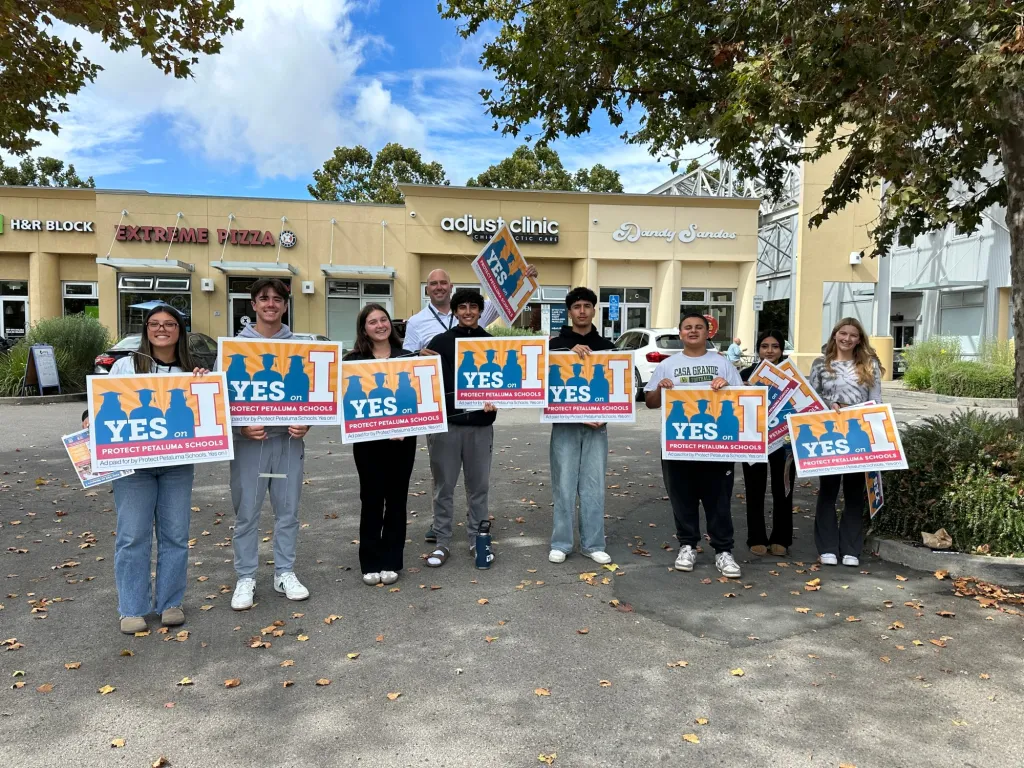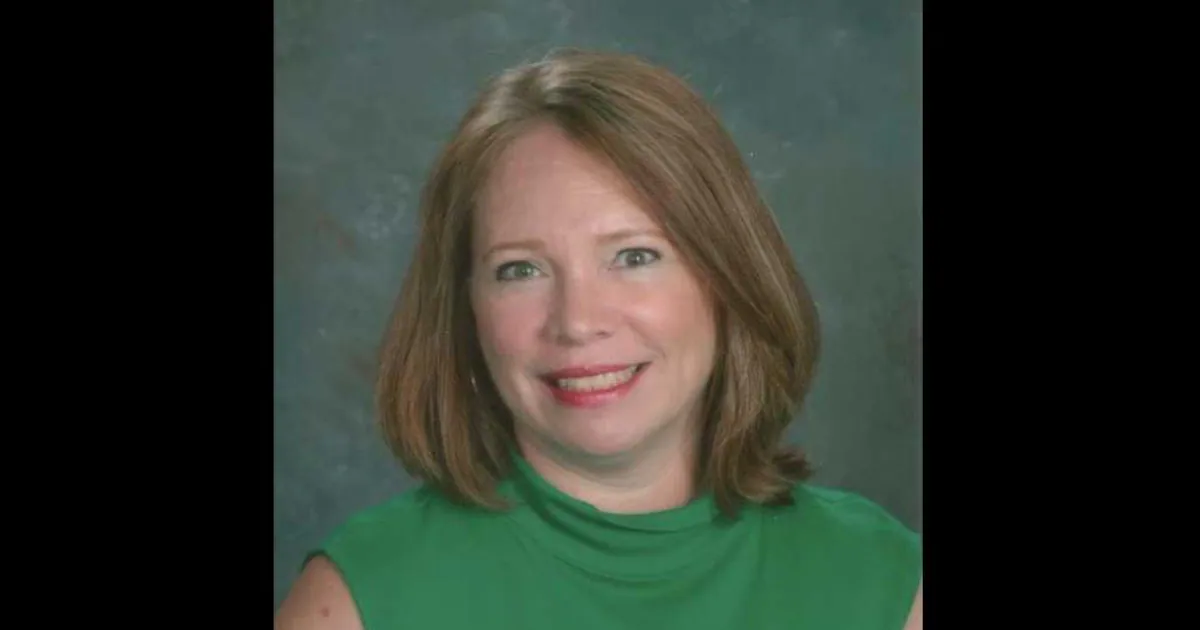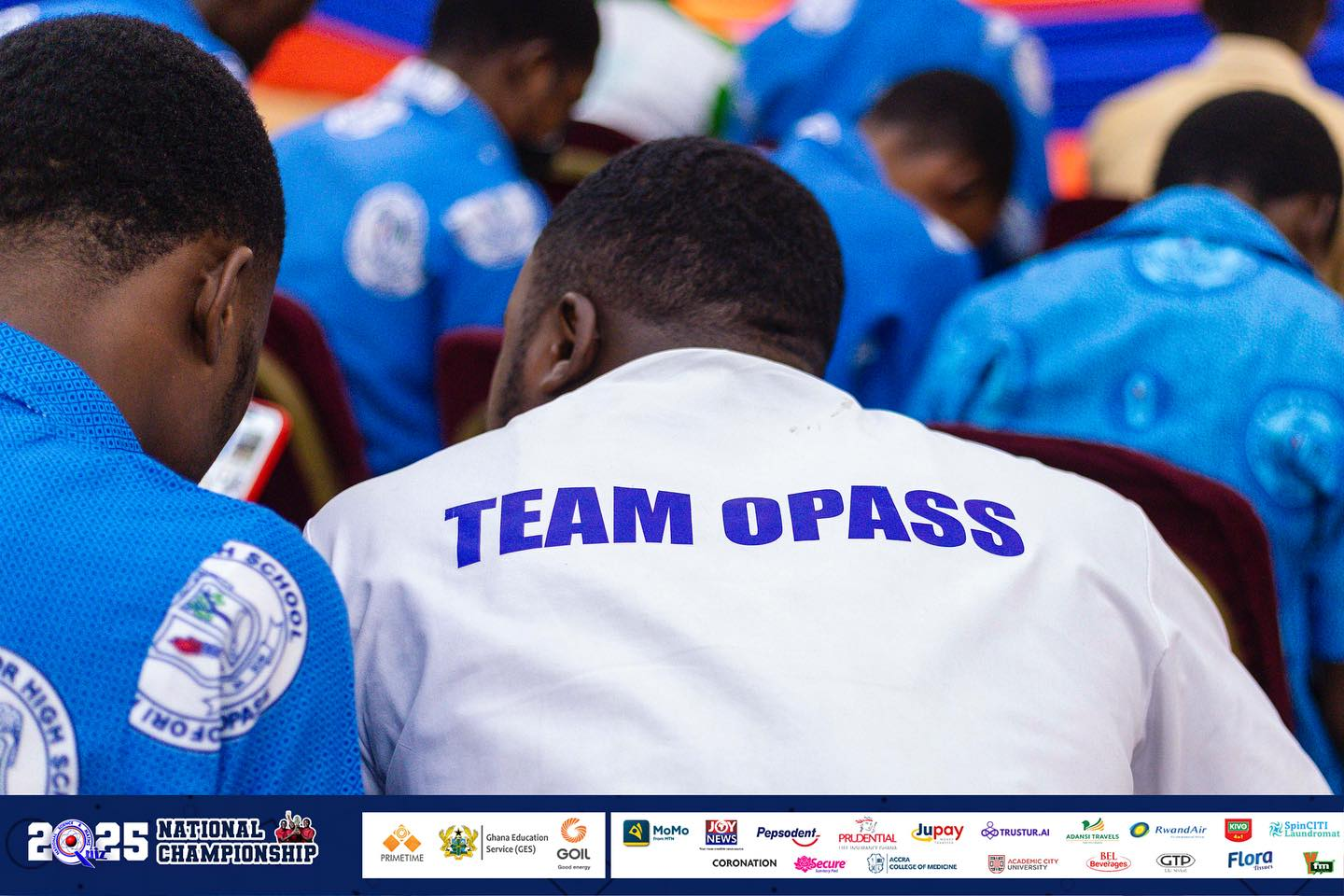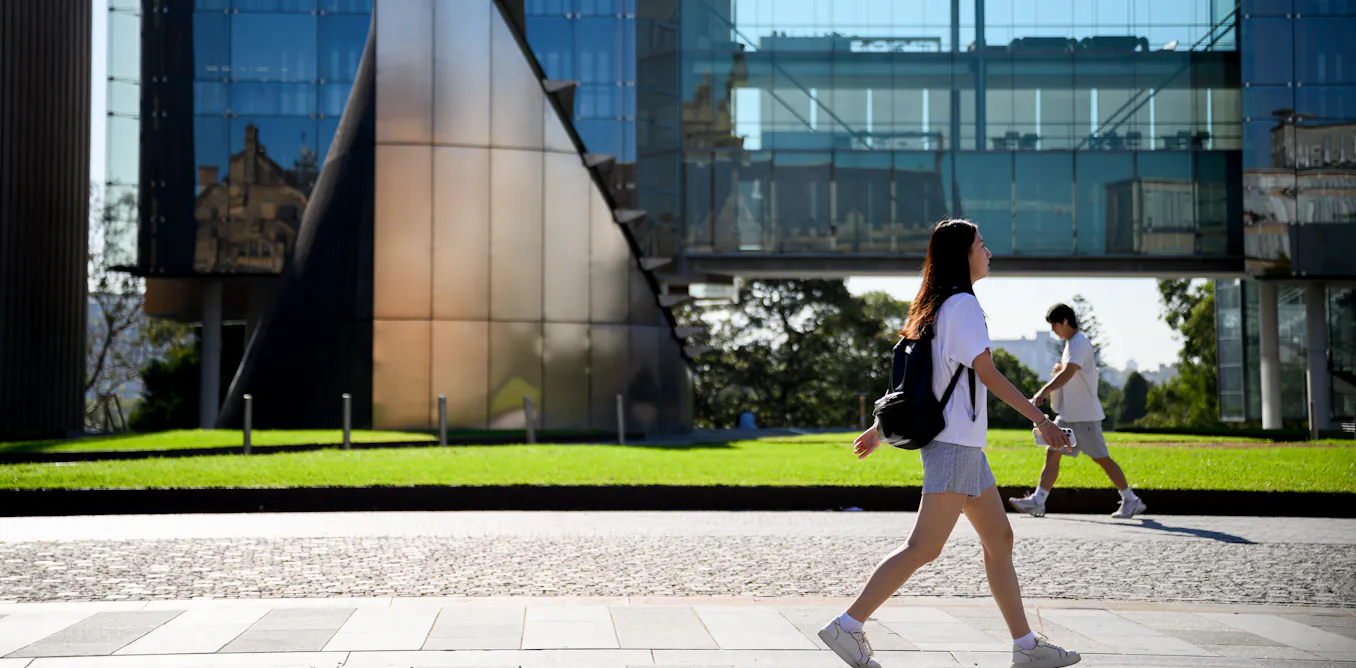Copyright Santa Rosa Press Democrat

Last November, the Petaluma City Schools district put a pair of ballot measures before voters calling for new parcel taxes to help fund elementary and secondary schools. Both needed two-thirds approval to pass, and only one — for the elementary schools — met that threshold with 68.5% of the vote. That left the middle and high schools without the funding district leaders say is needed, and so a new parcel tax, Measure I, was placed on this November’s ballot. Measure I proposes a $129-per-year parcel tax over eight years for local secondary schools, raising an extra $3 million per year that Superintendent Matthew Harris and school board trustees say is sorely needed to boost teacher salaries and cushion a recent budget shortfall totaling $5 million — with district heads emphasizing the teacher salaries. “Our teachers are our most valuable resource,” said Mady Cloud, president of the board of trustees. “Everyone knows they need to be paid what they’re worth and it’s really a struggle right now, with the state and the federal government giving us money, then pulling it back.” “The lack of consistency, the uncertainty just makes our budget picture so much worse,” she said. A steady funding source from property taxes, district leaders say, would help stabilize that budget picture. Measure I requires two-thirds approval by voters living in the Petaluma Joint Union High School District. Should it pass, exemptions will be given to seniors over 65 and to those with qualifying low income or disabilities. In recent months, district leaders have pointed out that the end of pandemic-era funding, along with the sudden scaling back of federal education funds, has intensified a disparity in pay for district teachers. “Petaluma City Schools continue to face critical funding challenges due to the state of California’s low per-pupil funding levels and the district’s comparatively lower revenue compared to other North Bay districts,” stated a PCS meeting agenda from two months ago, when the board decided to place Measure I on the ballot. “Over the past three years, nearly 40% of our teaching staff has left the district, largely due to more competitive compensation in neighboring areas.” “This is what our district needs at this time,” said Harris, speaking recently with the Argus-Courier, “and I just want voters to understand that this money is going to be used to support our students, to make sure they have an excellent education, that academic rigor, that mental health support that they need and more academic options. Without that, we’re going to be looking at making some significant reductions.” State funding formula What conditions could lead to 40% of the PCS teaching staff leaving the district over three years? While district leaders note that a certain amount of those departures were due to difficulties caused by the pandemic, they also say they are simply not as well funded as other districts in the region, and therefore not able to pay their teachers as much. The funding of local schools is largely determined by the state’s Local Control Funding Formula, which aims to allocate state funding to school districts based on average daily attendance as well as student demographics. As Harris put it, LCFF funds are like a pyramid with different tiers making up the whole. The large bottom tier is the “base grant,” or the average per-student amount the state gives districts based on the average daily attendance of each student as well as grade level. By this computation, the state gives the Petaluma City Schools district, which currently serves about 7,540 students, a base grant of $11,323 per student per year for those in TK-3rd grade, $10,719 per student for grades 7-8, and $12,746 per student for grades 9-12, Harris said. The next tier on the LCFF funding pyramid is the “supplemental grant,” an additional amount districts can obtain for students categorized as English learners, foster youths or those qualifying for free or reduced lunches. Such students — referred to by the state as “unduplicated pupils” — bring the PCS district an additional $1,109 per qualifying student in TK-3, $1,020 for grades 4-6, $1,050 for grades 7-8 and $1,248 for grades 9-12. About 45.5% of the PCS student population falls into these categories. “The funds (for when) the students meet the requirements for the supplemental grant, you are using that funding to give extra support for those students,” Harris said. The top part of the pyramid is the “concentration grant,” which Petaluma City Schools does not qualify to receive. Only districts or charter schools with a majority of students with greater socioeconomic needs can qualify. Besides base and supplemental grants, PCS also receives money from other sources such as the Extended Learning Opportunities Program, which funds after-school care; voter-approved Prop 28 funds, which help arts programs; block grants; Title 1, 2 and 4 federal funds; and local property taxes. Adding them all up, the Petaluma City Schools district currently receives an average of about $17,900 per student per year, Harris said. But except for the property taxes, much of that funding can be inconsistent. For the base and supplemental grants, “We only receive this funding if students come to school every day, as we are funding on the average daily attendance and not enrollment,” Harris said. In the 2024-25 school year, Petaluma City Schools had a total LCFF entitlement of more than $89.7 million, a combined total for both joint districts — for the elementary and secondary schools — as well as for the district’s charter schools such as Mary Collins School at Cherry Valley. That’s low compared to other districts, say PCS leaders. According to the Measure I ballot language, “Nationally, California ranks among the lowest in funding per student provided to public schools and Petaluma City Schools receives far less funding than many school districts in the North Bay.” At the nearby Novato Unified School District, which serves about 7,500 students — a number similar to Petaluma’s — the district is projected to receive about $92 million in LCFF funds for the 2025-26 school year, according to online budget data. Measure I’s $3 million per year would roughly make up the difference in the two districts’ budgets. Still, pay at the Novato district is not appreciably higher. According to its data on salaries for certificated teachers and school nurses, Novato’s lowest teacher salary this school year is $62,355 and its highest is $134,087. By comparison, the starting salary for a teacher in the Petaluma City Schools district is $65,116 and the top salary is $121,691, according to Sandra Larsen, president of the Petaluma Federation of Teachers. Reaching that upper pay level isn’t easy: “It takes 20 years and 60 additional university credits to get to the top salary,” she said, adding that “Health care costs are rising for everyone, which affects a teacher’s take-home pay.” Another quirk of state funding can widen the disparity in teacher pay. So-called “basic aid” districts — often located in wealthier areas where property taxes are higher — let those schools avoid the LCFF system altogether, as the funding received in local property taxes exceeds the amount that California would offer. Such districts essentially fund themselves, with more reliable revenues and stronger budgets for salaries. In Napa Valley, for example, the St. Helena Unified School District brought in more than $42 million in unrestricted local revenue in the 2024-25 school year, allowing it to spend around $34,700 per student. That far exceeded the amount the small district of 1,100 students would have received from the state — allowing it to pay its teachers more. In the St. Helena district, the lowest reported certificated teacher’s salary in 2024-25 was $89,803, with the highest salary reaching $185,413 for a teacher of more than 20 years. Other basic aid districts reflected similar salary amounts. “This funding system perpetuates inequity in public education,” a Napa Valley Unified school board member told The Press Democrat in late 2024. “When neighboring school districts within a region have such drastically different funding levels, it’s hard to argue that the system is fair.” Harris echoed that sentiment, telling the Argus-Courier, “You can imagine the incredible inequity that causes amongst our schools.” In Marin County, 13 of the county’s districts are basic aid districts, including Tamalpais Union High School District and Sausalito Marin City School District, providing local educators with more options for higher-paid teaching positions. Larsen, the head of the local teachers’ union, also decried the uneven funding system. “California is shamefully low in per-pupil funding,” she said. “LCFF was an attempt to correct that, but it has not proven to be successful. Schools that receive basic aid” — those in wealthier areas — “get far more funding.” ‘Massive budget cuts’ All this is why, according to Measure I ballot language, funds raised by the parcel tax would only be used “to attract and retain excellent teachers; to enhance math, science, engineering, technology, and writing programs; to maintain smaller class sizes and to prepare students for college and careers.” That means none of the Measure I funds may be spent on administrative salaries or benefits, new facilities or other purposes. An independent citizens’ oversight committee would be appointed to oversee how the funds are spent. Several people in the district also said that should the measure fail, school cuts will follow. “Without the parcel tax money, the district will have to cut millions of dollars and it will basically impact every site, every program, every employee, and every student,” Cloud told the Argus-Courier. “The Petaluma Federation of Teachers is supporting this ballot measure because we have excellent schools and programs that allow our students to learn knowledge and skills that will help them grow into productive, healthy adults,” Larsen said. “If Measure I does not pass, we will have to look at massive budget cuts.” She added, “The goal is always to keep budget cuts as far from the classroom as possible, but the deficit will be so large that this is not feasible. Measure I will help us continue our existing programs, including the new, expanded bell schedule that allows all students to have a rich high school experience.” Jake Dunn, now in his 24th year of teaching agricultural sciences at the high school level, has been at Petaluma High School for the past 13 years. “With the decision to increase the number of classes students can take, our program has benefitted by adding an additional full-time instructor this year,” he said. “This has dramatically increased the opportunities for students to participate in our program and learn skills that may lead to careers upon graduation or prepare them for further education.” But he worried those positive developments for students will be erased unless voters pass Measure I this November. “We have been told that without the passing of Measure I, the retention of the numerous teachers added to fulfill the new bell schedule will be difficult,” Dunn said.



